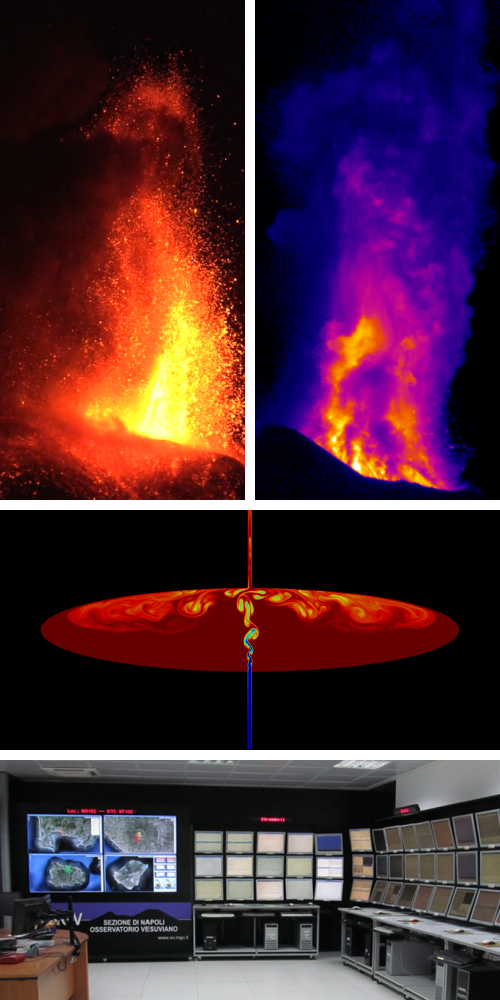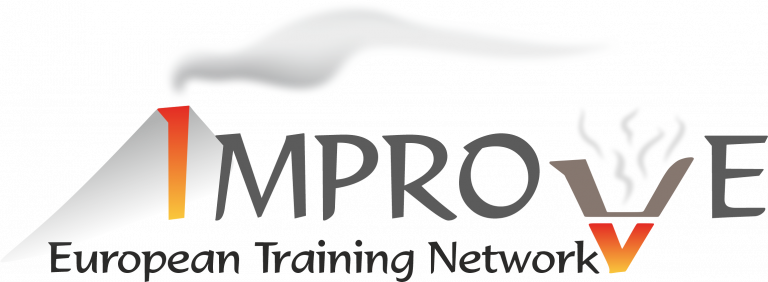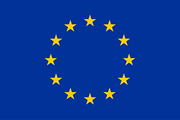Workpackages

WP1 - Network Management and Supervision [Months: 1-48]
Partner responsible: INGV
Management and supervision of the network is the duty of the Coordinator and Supervisory Board (SB) composed of one representative from each participating organization (academic and non-academic). The SB is responsible for decisions related to the network, including approval of: ESRs’ Personal Career Development Plans, Data Management Plan, consortium agreement (including Intellectual Property Rights), project reports, single activity plans and related costs; of the evaluation of ESRs’ and participants’ conduct, monitoring and analysis of progress, measures to counteract progress delay and/or other specific problems arising, and approval of any document or act resulting from the network. The SB appoints the External Advisory Board. While all participating organizations contribute to WP1 through the SB, the Coordinator (INGV) holds full responsibility, and maintains the necessary links between the consortium and the Commission through the REA (Research Executive Agency). The following tasks summarize the major actions foreseen, to which activities will be added if necessary: 1.1 Network supervision; 1.2 Consortium agreement; 1.3 Kick-off and SB meetings; 1.4 Recruitment strategy; 1.5 Fund distribution; 1.6 Website administration; 1.7 Project reporting.
WP2 - Network-Level Dissemination and Communication [Months: 2-48]
Partner responsible: INGV
While INGV holds responsibility of this WP as the network Coordinator, all participating organizations fully contribute at network level with their complementary expertise, and at local level through specific actions. Dissemination and communication activities include website opening and continuous implementation. Dissemination includes about 40 ISI scientific articles, most of them from year 4 and continuing after project end, as well as presentations by ESRs and senior personnel at international scientific meetings, workshops, and conferences; a program of lectures and seminars by the ESRs at their host as well as at other institutions; at least six IMPROVE newsletters; and the organization of the IMPROVE Final Conference. Opening all Network Schools and Specialized Short Courses to external students (about 15 at each event) also represents an effective means of IMPROVE dissemination.
Communication activities include the organization of two Open Days with primary and secondary schools and with the general public, participation of ESRs in information days at Universities, press releases in conjunction with the two field experiments, the Network workshop and the Final Conference, two Open Days at the Krafla and Etna experiments, publication of at least three scientific magazine articles, and participation in EU-level and national events dedicated to public engagement of researchers (EU Researchers Night and others). The IMPROVE website is a major means of dissemination and outreach, and will be implemented so that it reaches, with appropriate language, both scientists and the public. IMPROVE Facebook and YouTube channel further contribute to IMPROVE’s reach.
WP3 - Network-Wide Training [Months: 10-48]
Partner responsible: UNIVBRIS
While partner UNIVBRIS takes primary responsibility in promoting the organization and execution of network-wide training activities and events, many other partners hold direct responsibility of specific events. The foreseen activities include two major, multi-disciplinary Field Experiments, four theoretical and practical Network Schools (including training in science, technology, complementary and soft skills, and science-business relationships), six Specialized Short Courses, one Workshop on science-business developments and relationships, and nine Digital Training Modules. Three non-academic Participants represented by industrial SMEs fully contribute to the field experiments and the Network Schools, with dedicated instrumentation available to the ESRs, specific tests with the active contribution of the ESRs, specific training modules on technological aspects, complementary/soft skills that are highly sought after by industries, and business-oriented modules and perspectives; and are major organizers of the IMPROVE workshop on science-business relationships. Three ESRs’ Mini-Workshops include strong components of practical training on team work, team leadership, project leadership, inter-disciplinary cooperation, evaluation of progress, risk identification and risk mitigation strategies, dissemination of scientific results, public speaking, and science reporting.
WP4 - Training-Through-Research 1. Deciphering the magmatic and geothermal systems at Krafla volcano [Months: 7-43]
Partner responsible: UI
Partner UI leads this WP, being located in Iceland and having conducted research for decades on Krafla volcano. SME partner LV owns the Krafla geothermal power plant and holds knowledge and expertise on the Krafla geothermal systems. UI and LV are therefore primary references for this WP. Additional six Beneficiaries and two SMEs, for a total of nine ESRs, participate in this WP. The objective of this WP is that of testing state-of-the-art methods for volcano imaging, and developing new ones, at the place in the world where direct observation of the rock-magma interface allows ground-truth testing and progress. The activities start soon after ESRs’ recruitment, with the Krafla field experiment at month 10. With active contribution of non-academic Participants, the Krafla field experiment includes deployment of a highly professional geophysical/geochemical survey instrumental network, and provides data that together with those coming from repeated campaigns and instruments in long-term acquisition, populate the IMPROVE database (see WP7). ESRs’ multiple tutorship and secondments reflect the highly collaborative, multi-disciplinary approach employed to image, characterize and describe the structure and dynamics of the magmatic and geothermal systems at Krafla volcano. The scientific objectives include testing state-of-the-art multi-disciplinary methods to image the rock-magma transition, and developing new and more advanced methods. These achievements will be transferred to WP5 to demonstrate their general validity through application to a different volcanic system. In turn, specific results from WP5 will be transferred to this WP with the same objective. This transfer activity offers cross-learning in the broad development of conceptual models for both Krafla and Etna volcanic areas. All the results will be immediately available to the industrial partner LV for their revision and update of geothermal exploration and exploitation strategies at WP6.
WP5 - Training-Through-Research 2. Modelling magmatic and volcanic processes at Etna volcano [Months: 7-43]
Partner responsible: INGV
Partner INGV leads this WP, being located in Italy and holding the Etna monitoring and surveillance system with a dedicated 24/7 operational room and a network of about 160 multi-parametric monitoring instruments. An additional five partners including two SMEs, for a total of six ESRs, participate in this WP. The main objective of this WP is that of bridging the frequency gap in observation, modelling and understanding of ground displacement dynamics, revolutionizing volcanic system investigation and forecast capabilities. The activities start soon after ESRs’ recruitment, with the Etna field experiment planned at month 13, and to which all ESRs participate. With active contribution of non-academic Participants, the scientific and training contents of the Etna experiment include the setup of an advanced network of monitoring instruments for experimental purposes, at one of the best known and best monitored volcanoes in the world. The field experiment as well as repeated measurement campaigns by individuals and groups of ESRs provide the data for population of the IMPROVE database (see WP7). ESRs’ multiple tutorship and secondments reflect the highly collaborative, multi-disciplinary approach employed to resolve the dynamics of the shallow volcanic system at Etna. These achievements will be transferred to WP4, to demonstrate their general validity through application to a different volcanic system. In turn, specific results from WP4 will be transferred to this WP, with the same objective. This transfer activity offers cross-learning in the broad development of conceptual models for both Krafla and Etna volcanic areas. All the results will be immediately and continuously available to the Etna observatory at INGV-CT for their revision and update of monitoring strategies and interpretation of the volcano dynamics for hazard evaluation and assessments.
WP6 - Business and industrial follow-up [Months: 10-46]
Partner responsible: DIAS
This WP is dedicated to industrial transfer of the project results, and establishment of stronger and more fruitful links between volcano science and industry. Partner DIAS leads this WP, closely supported by the Coordinator. The industrial partners LV, WS and GSL hold relevant roles, and all partners contribute and participate. This WP includes the organization of a workshop on “Business and industry – oriented science developments” at month 26, involving geo-exploration industries in the fields of geothermal, oil, and gas energy as well as in the field of mineral resources, and industries developing technologies for monitoring natural processes and/or developing scientific laboratory instruments. Translating the results from WP4 (on Krafla) into outcomes and benefits or practical value for the geothermal exploitation activities by the industrial partner LV running the Krafla geothermal power plant, is among the objectives of this WP. The identification of next technological developments on gas analyzers and broad-band ground displacement devices is also a WP objective. The activities include (1) new developments by partner WS, initially defined in cooperation with partners INGV and LV, for gas measurement devices not available in the market and highly needed to both volcano and geothermal well monitoring and operations; and (2) advances in recent instrumentation developed by partner GSL, jointly identified with DIAS, INGV and LV, to monitor borehole broadband seismicity by extending instrumental operations to high T, highly corrosive environments typical of geothermal areas. All ESRs are involved at various levels, as they are expected to develop knowledge, skills and attitudes highly sought after from academia as well as from industry.
WP7 - Open Research Data [Months: 1-48]
Partner responsible: INGV
A Data Management Plan (DMP) will be first implemented at month 6, and further updated at months 17 and 48, with principles and rules to make the IMPROVE data findable, accessible, interoperable and reusable (FAIR), ensuring data-related Intellectual Property Rights. Daily operational activities and internal cooperation will be supported through a password-protected data-sharing platform, accompanied by a meta-database where the IMPROVE data are catalogued in order to ensure maximum access and usability. Before project end the data generated will be organized by partners INGV and UI into a database with standards adopted by EPOS (www.epos-eu.org), that will provide the platform and services for data opening two years after project end. All data developed in the project will be in principle included in the Open Research Database (ORD), unless major reasons to opt out emerge; data developed by participating SMEs may be left out from the ORD if that conflicts with IPR protection and agreements with the industrial partners. The database will include raw (level 0) data as well as high level data (e.g., located seismicity). The DMP will describe the dataset being generated, the policies adopted for their internal and external use, the standards adopted for data collection and the metadata accompanying the database, the classes of data not included in the database (e.g., those protected by industrial IPR), the methods for data archiving and preservation, and other elements relevant to allow maximum availability and proper referencing. While partner INGV as the Coordinating Organization holds the main responsibility on this WP, partners UI and LV share responsibilities concerning the data produced in relation to WP4 on Krafla volcano; and all partners contribute with the data acquired, processed or produced by them in the frame of the project, as well as with the data external to the project but made accessible to the project consortium.


